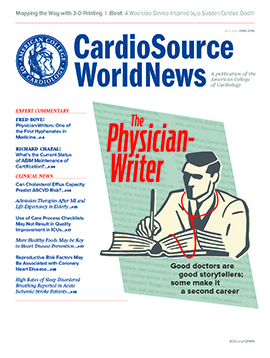Business Consult: Threats to Cardiologist Compensation in the Post-alignment Years: How We Got Here and How to Proceed
CardioSource WorldNews | Cardiology, perhaps more than any other specialty, has seen a nearly complete and rapid transition from private practice to health system partnership. Indeed, much has been written about the rationale and motivation for the willingness of cardiologists to sell their businesses, and health systems wanting to buy them. One common explanation is the deteriorating economics of private practice cardiologists due to reductions in reimbursement for in-office imaging services. The decreased ancillary revenue caused devastating decreases in practice income for many cardiologists. Of course, other factors were also at play, but the income stability, and in some cases, pay raises and meaningful one-time payments, were sufficiently attractive to compel cardiologists to cross the chasm from pure independence to health system alignment.
A consequence of health systems introducing compensation arrangements with aligned cardiologists was the imposition of regulatory requirements which didn’t apply as broadly as they did previously in private practice. Physicians who were compensated by hospitals and also received referrals from them needed to be paid at fair market value (FMV), and in a manner that was commercially reasonable (CR). Both of these terms, FMV and CR, have lengthy definitions, but I’ll paraphrase. Let’s say that FMV is some amount of money that lacks clear definition, but if referring doctors are paid above it, the consequences can be dire for all involved. Likewise, there’s no definitive guidance about what constitutes CR, but at a minimum, it requires the compensating party to pay no more than it would, even if there were no prohibited referrals. Terms that have imprecise definitions, but which require strict adherence, create substantial risks. Failure to be FMV and CR carries civil monetary and criminal penalties for both physicians and health system employers.
In light of these facts, and because of the government’s recent and dramatic increase in investigations of FMV and CR, health systems are favoring conservatism in their physician financial arrangements. Such a protective posture was one that many systems could not afford when the bulk of cardiology deals were being consummated. At that time, it was a competitive market. Hospitals that couldn’t get a deal done stood to lose a great deal of business to whatever other hospital did win the deal. As a result, many acquirers sought to offer as high a price as they thought they could legally pay to close the transaction—often providing meaningful compensation increases, and sizeable consideration for the acquired assets.
A number of cardiology transactions were in fact consummated with multi-year guarantees that included compensation increases and transition of ancillary services from the practice to the hospital. The effect was frequently a sustained net loss in the practice. In some instances, there was a short-term benefit through increased hospital referrals of newly aligned cardiologists that previously split their loyalty. However, this benefit may have been offset by a loss of referrals from non-acquired cardiologists who were previously splitters, and subsequently became loyal to the competitor that acquired them.
It stands that the motivation for doing cardiology deals often had a defensive component, and wasn’t solely opportunistic. It was not necessarily that the deal would result in a direct gain. Rather, not doing the deal would directly result in a loss. The acquiring health systems knew that the capital outlay and increased operating costs would need to be dealt with at some point in the future by leveraging an assembled physician network to create new value. However, at the time of the deal, most health systems had an incomplete plan for exactly how they would get their acquisition to bring about new types of change and create value for stakeholders. Only recently, have health systems begun to implement real initiatives to realize pent up value.
Underlying this increased commitment to unlock the value of cardiology practices is the fact that fee-for-service revenue has already started to become a diminishing proportion of a hospital’s portfolio. Although RVUs have historically translated directly to more money, the future is expected to be different. Revenue will be influenced by reducing unnecessary costs, increasing quality, and managing population health. Thus, if physicians continue to be paid for only generating volume (on a simple per RVU compensation model), there will be a disconnect between what a hospital pays its physicians to do and what payors compensate the hospital for those physician services.
Cardiologists who received compensation guarantees and/or increases are beginning to engage in conversations with their health system partners around sustainability of compensation arrangements that were initially put in place. One simple approach is to reduce cardiologists’ compensation. However, such an approach is ill-advised if it will jeopardize physician availability, reduce motivation, and impact retention. Another approach is to revise how cardiologists are paid, taking at least a portion of compensation that historically was tied to volume and shifting it to be at risk for activities that will generate value under future reimbursement models.
Ultimately, it can be mutually beneficial to find ways to maintain, or even increase pay, through modified compensation structures. Many systems are implementing or have recently implemented contemporary value-based compensation arrangements. Gaining access to the background and real time data from peers, and not just national compensation surveys, will be of increasing importance during this transitional time for cardiology services.

|
Read the full July issue of CardioSource WorldNews at ACC.org/CSWN |
Keywords: CardioSource WorldNews, Physicians, Private Practice, Referral and Consultation
< Back to Listings
